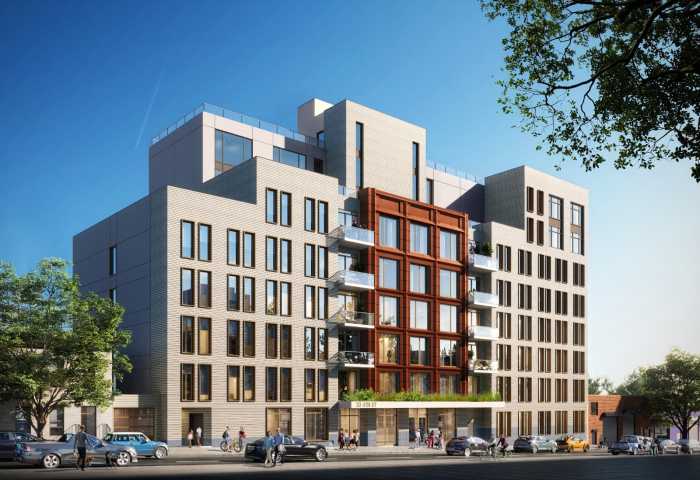It is now forbidden fruit!
Brooklyn Heights’ 75 Henry St. co-op building will reject a developer’s $130-million offer to sell the land along Pineapple Walk so it can erect a 40-story tower there, after the majority of residents voted against the deal that stood to net them hundreds of thousands of dollars apiece.
Shareholders voted 191–112 against the sale, according to a report by a Brooklyn Daily Eagle journalist who lives in the building.
The “no” vote also means that denizens of the 33-story tower at 75 Henry St. are not interested in selling the thoroughfare to anyone else, and the building’s board should reject all future offers for the prime slice of land, which runs between Cadman Plaza West and Henry Street and is home to the popular Park Plaza Restaurant and several stores.
The decision comes at the end of a month-long battle over the sale and development, which threatened to divide residents of the close-knit Cadman Plaza co-op community.
Manhattan luxury builder Anbau Enterprises first dangled a $75-million offer in front of residents in the beginning of December, then jacked up the price by another $55 million last week.
Under the original offer, unit owners were told they would make between $120,000 to $260,000 from the sale, depending on the size of their digs — and those who owned townhouses on the property would make even more. The latest offer presumably would have netted residents anywhere from $200,000 to $450,000, based on the 73-percent increase.
The co-op, which currently reaps $95,000 a month from the Pineapple Walk stores, would also have retained ownership of the new retail spaces and continued to collect rent.
But many residents — not to mention their neighbors at the Cadman Towers co-op on the other side of Pineapple Walk — feared the new tower would block views from both buildings and bring an influx of new residents to an area that already has an overcrowded elementary school, recently lost its hospital, and is still smarting over the sale of the nearby library branch for a similar high-rise.
Some also felt they had an ethical obligation to keep the area free from luxury housing and retain the ample open space between buildings. In the ’50s, planning czar Robert Moses originally intended to sell the land for one giant high-end apartment block. But locals fought back, and the city and state eventually used to land to build 75 Henry St. and its neighbors as part of the taxpayer-funded Mitchell-Lama program — below-market-rate housing aimed at middle-class families — which meant residents were able to purchase their properties for a song.
Shareholders at 75 Henry St. opted out of Mitchell-Lama years ago — so it now functions as a standard co-op, with market-rate values — but other nearby buildings remain part of the scheme.


























